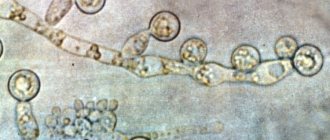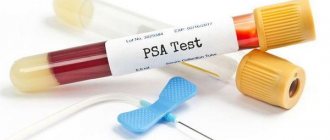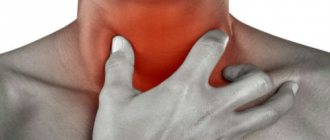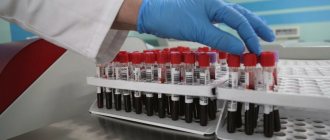Drinking 1 cup of coffee per day may help reduce the likelihood of liver disease
Every person needs to have an idea of what pathological phenomena can occur in the liver, how they manifest themselves and what causes them. After all, many important processes in the body depend on the condition of the liver and whether it functions normally.
Changes in liver function can lead to other health problems such as myopathy, infectious mononucleosis, diabetes, liver damage, and congestive heart failure. Good living habits are very important for normal test results, as well as for a healthy liver.
How to reduce alat and asat in the blood using folk remedies
Both substances are synthesized in the liver. It is on this that their concentration primarily depends. Normal levels of aspartate aminotransferase and alanine aminotransferase depend on the gender and age of the person. In the blood of an adult woman, the concentration of enzymes can reach 31 U/l, but not exceed this figure. In an adult man, the AST level is no more than 47 U/L, and the ALT level is no more than 45 U/L.
Any functional manifestations of the body - neuropsychic activity, breathing, muscle contraction - are ensured by the work of certain enzymes. Determination of the activity of most enzymes in biological fluid is used in medical practice as diagnostic tests. The most commonly used are ALT and AST.
When the decoding is done, the normal values for ALT are 27-191 nmol/(s l) and 0.10-0.69 µmol/(ml h).
To reduce ALT and AST levels, you need to understand the analysis parameters. If the blood analysis shows abnormalities, this will indicate the presence of a particular disease in the body. To lower the level of ALT and AST, you must first remove the source of the disease, which caused the increase in ALT and AST levels in the blood.
What is ALT?
ALT acts predominantly in the cytoplasm of hepatocytes, in the epithelium of the renal glomeruli, and slightly less in the heart. During developing destructive processes at the cellular level, Alt is released from them and penetrates into the bloodstream, where its increase is detected. The growth of ALT directly depends on the degree of organ damage and is an important indicator of necrotic changes in organ tissue.
In viral hepatitis, the degree of increase in Alt is proportional to the duration of the disease. In the acute course of the disease, enzyme activity exceeds the norm ten times or more. The growth of Alt in the viral form is detected very early - even before the appearance of jaundice. Its activity also increases in those suffering from the anicteric form. With effective therapy, ALT gradually decreases. However, a rapid decrease in Alt with increasing hyperbilirubinemia is a symptom of an unfavorable course of the disease.
In some cases, Alt may rise for no apparent reason. Also, ALT values change in a healthy person during the day: lower concentrations are recorded in the early morning, higher concentrations in the afternoon.
Article on the topic:
Symptoms and signs of liver cirrhosis in men
How to quickly reduce alate and asate in the blood – Diabetes Treatment
Myocarditis is an inflammatory heart disease characterized by damage to the heart muscle. In this situation, the blood test is also characterized by increased concentrations of ALT and AST.
It is important to consume enough fiber and complex carbohydrates. It can be brown rice, vegetables, herbs, fruits. It is important to normalize water balance. You should NOT drink alcohol or strong caffeinated drinks. As an additional means, it is worth taking a course of vitamin C.
Even increased physical activity can cause cell destruction and the release of ALT into the blood.
If the level of these enzymes is elevated, it is worth immediately deciding how to reduce ALT and AST in the blood using folk remedies. The presence of this pathology can only be determined with the help of a competent blood test.
Functions of special proteins
Proteins are made up of amino acids. Amino acid metabolism is a normal physiological phenomenon that cannot occur without special enzymes, such as alanine aminotransferase and aspartate aminotransferase. To facilitate understanding and pronunciation, their abbreviations are used - AsAt and AlAt (or AST and ALT, respectively).
Why do the body need them? The content of AST and ALT in the blood determines the presence of a disease in a particular organ. This greatly simplifies the diagnostic process.
The level of these enzymes in different organs differs, so elevated levels of ALT and AST, for example in the liver, indicate pathology of this organ.
The locations of ALT are:
- Liver (highest concentration).
- Pancreas.
- Skeletal muscles.
- Kidneys.
- Myocardium.
There is very little of this enzyme in the blood plasma of a healthy person, but if the analysis reveals high levels, then all of the above organs automatically fall into the risk zone.
As for AST, this specific enzyme may not be active everywhere. Its peculiarity is that its level can increase due to a small number of reasons. Such a narrow range of pathologies makes it easier to search for a specific disease.
The following organs contain AST:
- Cardiac muscle.
- Liver tissue.
- Skeletal muscles.
- Brain.
Aspartate aminotransferase supports the metabolism occurring in these organs and ensures the preservation of their cellular structure.
How to reduce ALT and AST in the blood: medications and folk remedies
For many diseases, such as pancreatitis, hepatitis, diet is very important. Reduce consumption or completely eliminate everything fatty, spicy, smoked, salty and alcohol. To prevent exacerbations, a healthy lifestyle should become your goal in itself!
Reducing the amount of ALT and AST enzymes in the blood is possible only by eliminating the underlying disease that caused the deviation from the norm. When the damaged organ completely restores its functions, it will stop releasing transaminases into the blood. Traditional medicine can help a diseased organ quickly cope with pathology and treat it.
It is worth knowing that in childhood, enzyme levels may deviate from the norm. This is due to the uneven development of the child’s body.
Considering that ATL is elevated only when liver cells are damaged, the doctor should prescribe not only medications to treat damaged organs, but also those medications called hematoprotectors. They make it possible to protect hepatocytes from the influence of other aggressive factors.
Summing up
People who experience liver problems should stop smoking . Cigarette smoke contains a large number of toxins, which include nicotine and ammonia.
If a person is exposed to these substances every day, they are automatically absorbed by the body and retained in it. The liver in such a state of the body will strive to rid it of toxins, simply working for wear and tear.
Against the background of such work, the amount of enzymes in the blood increases, since after such a load the liver begins to malfunction, causing certain health problems. It is for this reason that it is so important to eliminate or minimize alcohol consumption .
Following these relatively simple rules will improve not only your overall well-being, but also your appearance. A healthy liver has a positive effect on the condition of the skin, hair and nails.
Signs of increased enzyme concentrations
If you don’t want to take drugs that reduce ALT and AST in the blood, you can try replacing them with herbs. Moreover, most medicines for liver pathologies are of plant origin.
Bilirubin (C33H36N4O6) is not an enzyme, but a pigment, an important component of bile. Both decreased and increased bilirubin can be evidence of various pathologies - and not only liver ones.
ALT and AST levels may also be elevated in pregnant women. This problem very often occurs in the first months of pregnancy. This circumstance does not require treatment, since it is normal during pregnancy.
After the biochemistry has been deciphered, it can be found that in some diseases the level of ALT may decrease. Oddly enough, a decrease in ALT levels is most often not associated with liver function. Such diseases include infectious infection of the genitourinary system, tumor growths in various places of the human body, hepatitis (alcoholic), B6 deficiency due to poor diet or too frequent consumption of alcoholic beverages.
Norms of indicators
ALT and AST levels are measured in units per liter of blood (U/L). In the analysis results, the main reference point is the upper limit. The following indicators are considered normal:
- Men - ALT no more than 40 U/l, AST no more than 42 U/l.
- Women - ALT and AST should not exceed 32 U/l.
The normal range for both enzymes is 10 to 40 units. This big difference is due to several factors:
- Patient's age. In old age, as a rule, the level of enzymes in the blood is slightly below the permissible upper limit. ALT and AST levels are also lower in adolescents than in adults.
- Gender of the subject. Women have lower rates than men. Values considered normal for men will be too high for women.
- Genetics. There are differences in normal values among people of different ethnic groups. Various mutations in liver and kidney cells, even if they are rare, affect the indicators.
- Method for determining enzyme content. The study can be performed colorimetrically (Reitman-Frenkel method) or spectrophotometrically (kinetic) method.
- Taking medications. People with chronic diseases who are forced to constantly take medications (diabetes mellitus, cardiomyopathy) must report their pathology and what medications they use before the study.
High results do not bode well. But, before you find out how to reduce ALT and AST levels, you should figure out whether any of the above factors could affect the result. It is also necessary to understand that the results indicate the presence of diseases, but do not determine the type of damage. The final diagnosis is made after a comprehensive examination.
About the use of traditional methods
Deviations from normal levels for both enzymes indicate health problems. Patients with elevated levels are primarily interested in how to reduce ALT and AST in the blood. Enzyme levels are automatically normalized if the diseases indicated by their high levels are cured.
During pregnancy, in the first trimester, a slight increase in ALT is possible. There is nothing scary about this, it is physiological and related to the pregnancy itself. If ALT increases significantly and characteristic symptoms appear, you should urgently consult a doctor for examination.
It is worth eliminating foods high in fat from your diet. Such food prevents the entry of beneficial microelements into the body, as it completely blocks the liver, forming fat cells in it.
Elevated levels of ALT and AST indicate the process of cell destruction in the liver and other organs. To reduce the level of enzymes in the blood serum, additional studies may be needed to identify the cause of the pathology. Only then will adequate treatment be prescribed, during which the patient’s condition will improve and the studied indicator will decrease.
When identifying the cause of an increase in ALT and AST in the blood, they first try to remove the source of the disease, as a result of which the concentration of enzymes is increased. During treatment, it is important to monitor the patient’s diet. It should be balanced and healthy. You should avoid salty, smoked and spicy foods.
During pregnancy, the concentration of AST and ALT enzymes in the blood often increases. During the first trimester, the volume of enzymes can reach 31 U/L or more. This indicator will not be a deviation, since during pregnancy the woman’s liver and internal organs are forced to cope with a greater load.
Even with a relatively healthy lifestyle, about once every six months after 35 years you need to donate blood to check your ALT and AST levels. This will help to avoid serious problems with the body in the future, which will require long-term and expensive treatment.
A diagnosis of fatty liver degeneration was made. Essentiale forte N and diet according to the table No. 5 were prescribed. Liver enzyme values BEFORE treatment: ALT - 56, AST - 39.8. A month after the start of treatment (02/14/18): ALT - 77, AST - 43.5 (it’s not clear why). I retook the tests on 02/21/18: ALT - 65.2, AST - 38.4. Tested for hepatitis B and C. bilirubin, etc. See attachment. Help me understand the test results - what’s wrong with me?
The treatment of each disease is specific and there is no point in describing it. A few words can be advised to people taking medications that affect the liver, as well as abusing alcohol. In such cases, it would be useful to periodically take a course of hepatoprotectors (Carsil, Essentiale) and at least somehow protect the liver cells from damage, thereby lowering ALT.
Why can alanine aminotransferase and aspartate aminotransferase increase and how can their levels be reduced?
improvement of digestion processes; improvement of bile outflow; protection of the organ from various damages.
There are medications that affect deviations from the norm when testing samples for ALT and AST. The highest probability of disruption of the activity of enzymatic substances is when taking antibiotics, drugs for muscle cramps, antifungal drugs, drugs that lower blood sugar levels, nitrofurans.
In later stages of pregnancy, an increase in the concentration of aspartate aminotransferase and alanine aminotransferase in the blood may be a sign of moderate or low severity gestosis. During gestosis, a woman also experiences constant nausea, dizziness, and increased blood pressure. The severity of gestosis can be judged by the increase in the concentration of the enzymes ALT and AST. The higher their volume in the blood, the more severe the disease.
Side effects of deviation from norms
Many are frightened by the serious complications that can result from leaving the problem unattended and, naturally, you should not let any deviations from the norm during pregnancy take their course. Since the main organ that produces alanine is the liver, it is most likely that it has the prerequisites for the disease, which is what an increase in ALT means. This indicates the need to additionally monitor its work, since the growing load can lead to complications during pregnancy.
Among the obvious diseases that occur when ALT levels increase: cholestasis of pregnancy, preeclampsia, fatty liver in acute form. If AST is measured simultaneously with this enzyme, signs of heart failure can be determined. In the presence of pathologies or chronic diseases, the indicators will be increased. However, it is worth making a reservation that the cause of the increase in ALT may be previously suffered hepatitis, or it is currently developing.
The side effect of an increase in liver enzyme indicates the need to pay special attention to your diet and lifestyle. For many, giving up bad habits is stressful. It is advisable to get rid of them while planning pregnancy or in the first trimester. In this case, the body will have time to restore vital functions.
A lack of vitamin B6 also causes an increase in ALT during pregnancy. It is worth mentioning two unpleasant diagnoses that can be established in case of deviation from the norm: hepatitis and cirrhosis. If titers of hepatitis A, B, C are tolerated with almost no obvious signs, then E is considered one of the most dangerous.
What do ALT readings tell you?
Alanine aminotransferase is an enzyme that is a diagnostic indicator of the development of a significant number of pathologies. Analysis of the performance indicators of the human body is sometimes carried out in the ratio of ALT and AST (aspartate aminotransferase). A detailed examination allows you to get the most accurate picture of the state of the body.
Using this analysis, it is possible to detect the development of hepatitis at an early stage, when the disease does not yet make itself felt by any symptoms. The same applies to the diagnosis of cardiovascular pathologies. When diagnosing myocardial infarction, great attention is paid to the ALT indicator.
Alanine aminotransferase is synthesized inside cells, and only a small amount of it can enter the blood. In hepatitis, cirrhosis and other forms of liver damage, this substance is detected using routine diagnostic measures. A decrease in enzyme activity indicates that the body is in danger and urgently needs help.
Monitoring ALT levels is necessary because the liver performs the most important functions in the body:
- neutralizes allergens, poisons;
- synthesizes cholesterol, bile acids, bilirubin, lipids and phospholipids;
- stores and replenishes energy reserves, provides the body with glucose;
- provides synthesis of some vitamins.
A decrease in ALT activity means that these life-support functions of the body are at risk.
Special diet
If ALT is elevated during pregnancy, diet is one of the key points for restoring health. It is quite affordable and simple; for example, it is recommended to replace the usual tea with herbal tea. It is worth paying attention to the composition and giving preference to dandelion, astragalus, and thistle. It is recommended to add turmeric and garlic as seasonings. These simple components help launch natural processes in the body that have antitumor and anti-inflammatory effects.
Among the dietary supplements, it is allowed to include antioxidants in the diet, which help the body rejuvenate cells and strengthen them. Nuts and avocados, mangoes and citrus fruits are quite affordable. Which also belong to the group of antioxidants. It is advisable to consume at least 50 g of dietary fiber per day, which serves as a natural “cleanser” of “bad” cholesterol.
The key is not only to eat healthy food, but also clean water. It is advisable to adhere to the daily norm and replace coffee and tea with it. If a woman does not take any vitamins during pregnancy, this may cause an increase in ALT during pregnancy. Why is this issue receiving so much attention? Because during the period when a woman is carrying a child, the body undergoes great changes and experiences increased stress. It is important not to miss the moment when you can help and restore the working capacity of important organs, in particular the liver.
Changes in ALT levels with age
Human alanine transaminase concentrations decline slowly after reaching 70 years of age. Recent medical research suggests that ALT has value as a marker of the aging process. A prolonged decrease in this enzyme below 14–17 IU after 70 years of age indicates a high risk of death. Its onset is associated with a decrease in the activity of some vital liver functions, incl. gluconeogenesis.
Normal ALT values for men over 17 years of age are 41 U/l, for women - 31 U. The ALT norm in newborns is 17 units, then it gradually increases by six months of age to 56 units, slowly decreasing in old age.
Often, ALT results are compared with AST results. In this case, the so-called de Ritis coefficient is used. Normally, it varies from 0.91 to 1.75. Exceeding the coefficient above 2 indicates damage to the heart muscle and the likelihood of developing myocardial infarction. A decrease in this indicator indicates liver damage, and the lower the coefficient, the more serious the problem.
The process of taking biomaterial for research and deciphering the results
Before you come to a medical facility for testing, you need to prepare. The day before, you should exclude dairy products and plant foods from your diet, including legumes, eggs, and sausages. On the day of delivery, you should refrain from eating so that the results are reliable.
The procedure for collecting blood occurs by taking it from a vein, so we can say that it is not painful. In order to eliminate the risk of hematoma formation, the injection site must be covered with a plaster or bandaged. The results are prepared almost immediately, but you can receive them the next day (if we are talking about a public clinic).
It happens that the standards differ in different clinics, so you should judge the results only after consulting a doctor. An increase in ALT by 2 times during pregnancy is considered uncritical, but if the numbers are increased by 5 times or more, then this is a reason for additional research (for example, ultrasound) and consultation with a specialist. In medical practice, a value has been established that clearly indicates the presence of pancreatitis or hepatitis; the deviation from the norm is 20 times higher.
Symptoms of low ALT
Quite often, the amount of alanine aminotransferase is reduced due to vitamin B6 deficiency. With this hypovitaminosis the following symptoms develop:
- increased irritability;
- lethargy;
- disturbance of night sleep;
- polyneuritis of the hands and feet;
- loss of appetite (up to anorexia);
- dyspeptic disorders;
- stomatitis;
- glossitis;
- seborrheic facial dermatitis.
With pathologies of the pancreas, the following signs are observed:
- pain of varying intensity;
- nausea, vomiting;
- increased gas formation and bloating.
Symptoms of liver cell necrosis
A reduced amount of ALT in the body may indicate necrosis of liver cells. The earliest signs of the disease are pain and slight enlargement of the largest gland in the human body. The patient is concerned about dyspeptic symptoms - nausea, turning into vomiting. As ALT levels further decrease and necrosis increases, hepatic encephalopathy develops. Its signs:
- drowsiness;
- memory loss;
- trembling of hands and feet;
- aggressive behavior and a tendency to commit inappropriate acts;
- disorientation in time and space, i.e. a person cannot explain where he is and what is happening to him;
- increased muscle tone.
How to help a pregnant woman
The ALT level in women in the first trimester of pregnancy is considered a good indicator. This is due to the fact that not only hormonal changes occur, but also an active exchange of blood cells between the mother and the growing fetus. Only a qualified specialist can give a specific assessment of a woman’s health status.
If the reason for the increase in alanine aminotransferase levels is a lack of vitamin B, then restorative therapy is prescribed, which includes vitamins B and C, hepatoprotectors. It is also worth noting that normalizing the diet is one of the main ways to normalize ALT levels in the blood. It is believed that eating brown rice, fruits and vegetables, green or any herbal tea has a positive effect on restoring liver function.
The goal of treatment is not to reduce indicators, but to eliminate the inflammatory process, which leads to an increase in ALT during pregnancy. Only in this case can we talk about the possible restoration of the organ and health in general.
How to prepare for a blood test
In order for the examination results to be as accurate as possible, you need to prepare for it. The general rules for preparing for biochemical analysis are standard:
- do not eat for 8-12 hours before blood sampling;
- do not take aspirin or valerian tablets the day before the test;
- do not drink alcoholic beverages several days before the examination;
- immediately before the examination, do not smoke, avoid heavy physical work and emotional overload.
Blood for this analysis is taken from a vein in the morning. The blood collection procedure is standard. For examination, a kinetic method is used, characterized by a high degree of sensitivity. The period for receiving results is no more than 2 days.
The survey results are influenced by the following factors:
- poor adherence to the rules of preparation for analysis;
- unhealthy diet leading to excess weight;
- use of drugs that affect liver function;
- severe compression of the vein;
- following a vegetarian diet;
- insufficient physical activity.
Aspartate aminotransferase is elevated, what does this mean?
Normally, transaminases enter the bloodstream only during the natural processes of death of old cells. A significant increase in these enzymes is observed when tissue destruction occurs in an unnatural way, that is, as a result of trauma, ischemia, dystrophic, inflammatory and necrotic processes, autoimmune reactions, severe intoxication, prolonged physical and emotional overload, as well as in the presence of malignant neoplasms.
Very important! Among the main reasons for increased aspartate aminotransferase, cardiac pathologies occupy the first place.
In acute myocardial infarction, the level of AST can increase 20 times from normal values. It should also be noted that changes in biochemical tests are noted even before the appearance of classic signs of a heart attack on the ECG.
In acute coronary insufficiency, an increase in aspartate aminotransferase is diagnosed within 24 hours, then the enzyme value begins to decrease, and within a few days reaches normal values.
The level of AST also increases with severe attacks of angina pectoris, severe heart rhythm disturbances accompanied by attacks of tachyarrhythmia, acute rheumatic carditis, pulmonary artery thrombosis, in patients after angiocardiography or cardiac surgery
“Non-cardiac” causes of increased aspartate aminotransferase are most often liver diseases of various etiologies. It can be:
- hepatitis: alcoholic,
- viral,
- toxic genesis,
When is a blood test for ALT prescribed?
The maximum amount of the enzyme is found in liver tissue. Therefore, a blood test for ALT is used to diagnose diseases of the largest gland in the body that do not manifest external symptoms. With the help of ALT analysis, even the most minor deviations in the functioning of the body can be detected.
You should be tested for ALT levels in your blood if the following symptoms appear:
- increased weakness and fatigue;
- significant decrease in appetite;
- nausea;
- vomit;
- abdominal pain and bloating;
- yellowing of the skin and whites of the eyes;
- itchy skin.
All these symptoms indicate possible liver damage. An examination is also necessary if there is a risk of diseases of this organ:
- previous hepatitis;
- contact with the hepatitis virus;
- alcohol abuse;
- unfavorable genetic predisposition;
- use of drugs with hepatotoxic effect;
- overweight;
- diabetes
ALT analysis is also done to monitor the effectiveness of treatment.
Reasons for ordering the study
There are many terms in medicine, and it is not always immediately clear what ALT is and why its level needs to be monitored. In addition to the mandatory procedure for taking tests during pregnancy, as a result of the patient’s complaints or according to screening data, the doctor may suspect the presence of one or another abnormality. Despite the fact that most of the reasons for prescribing an extended blood test are common to many pregnant women, there are a number of symptoms that should alert you:
- pain symptoms in the chest area;
- dizziness, feeling of bitterness in the mouth;
- jaundice, increased levels of bilirubin in the blood, edema;
- decreased appetite, frequent belching;
- increased blood pressure, protein in the urine;
- vomiting and nausea in the last trimester;
- abdominal discomfort, fatigue.
We should not hush up the presence of these problems by attributing them to a special situation. They can become prerequisites for the development of a serious disease. Since not everyone knows what this means - an increase in ALT, it is necessary to obtain clarification from a competent specialist. In short, this enzyme is contained in several organs: skeletal muscles, heart, liver, kidneys.
How to increase ALT levels in the blood
To normalize the content of this enzyme in the blood, it is necessary to follow these recommendations.
- Conduct a complete diagnosis of the entire body to detect dangerous pathologies.
- As prescribed by your doctor, take medications that improve liver function and protect it (hepatoprotectors).
- If you have vitamin deficiency, take vitamin supplements.
- Follow the principles of proper nutrition.
The following should be completely excluded from the diet:
- spicy, fatty, rich foods;
- marinades and smoking;
- alcoholic drinks;
- all products made from white flour;
- hot seasonings, spices.
- nuts, especially pine and walnuts;
- grenades;
- fish;
- Sweet pepper;
- liver.
Diseases that accompany increased ALT
Only a qualified doctor can answer the question: “If ALT is elevated during pregnancy, what should you do?” Initially, you need to understand that you cannot do this with medications alone. This deviation is not typical for pregnancy. The norm indicators are influenced by many factors. Readings exceeding 32 IU/l are considered alarming.
If a discrepancy in ALT levels increases, it is important to determine the causes and only then select a treatment regimen. The main signs of diseases that can show an increase in the level of the enzyme in the blood:
- Toxic hepatitis: can develop not only as a result of alcohol and tobacco abuse, but also from working in hazardous industries or prolonged use of medications.
- Viral hepatitis: one of the most complex, transmitted by contact or through blood. It is insidious in that it may not show obvious signs of the disease for a long time. Hepatitis C is considered the most complex form.
- Liver cirrhosis refers to the most advanced form of the disease, when irreversible consequences have started in the body. Dead cells are no longer capable of recovery, and the prognosis in this case is not comforting.
However, it is always necessary to sensibly evaluate test results. Not a single case is taken into account, but to ensure the accuracy of the data obtained, the analysis is repeated. The duration of pregnancy is also of great importance. The duration of treatment is determined by the return to normal ALT in a pregnant woman.
Danger of low ALT
In most cases, reduced (almost zero) ALT activity does not pose a danger to humans, because often results from a lack of pyridoxine (vitamin B6). This pathology is easily corrected with diet and drug injections.
Severe liver conditions accompanied by a decrease in the number of hepatocytes are much more dangerous. And if ALT is low in the presence of pathologies of this organ, this indicates a danger to life. Timely diagnosis of these diseases and their treatment with low enzymes significantly increases the patient’s chances of recovery.
Aminotransferases are intracellular enzymes
ALT and AST are intracellular enzymes; in their chemical structure they are substances of protein origin. Aminotransferases are involved in the metabolism of amino acids, from which species-specific proteins are synthesized - the building material for body cells. The enzyme ALT is involved in the metabolism of alanine, AST - aspartic acid. ALT and AST are formed in the cells of internal organs and skeletal muscles with the participation of vitamin B6 (pyridoxine). Vitamin B6 is considered a cofactor (accelerator) for the synthesis of transaminases.
A lack of pyridoxine in the body leads to changes in normal enzyme levels. Vitamin B6 not only comes from food, but is also secreted to a greater extent by beneficial bacteria in the small intestine. Most often, hypovitaminosis B6 occurs due to intestinal disease. Dysbacteriosis is accompanied by the death of normal intestinal microbiota and the proliferation of pathogenic microflora, which causes insufficient synthesis of pyridoxine.
ALT and AST are part of the cells of internal organs: liver, kidneys, lungs, heart, pancreas. Aminotransferases are found in skeletal muscles, nervous tissue, and red blood cells. These are intracellular enzymes that enter the bloodstream in small quantities in a healthy person. ALT is found in high concentrations in liver cells. The enzyme is an indicator of organ damage and is one of the main diagnostic criteria for the pathology of the hepatobiliary system. AST predominates in myocardial cells - a significant increase in the enzyme in the blood indicates damage to heart tissue.
Prevention
Preventive measures to prevent a decrease in ALT activity include:
- refusal of strict diets and especially fasting, which reduces the activity of alanine aminotransferase;
- taking vitamin supplements enriched with microelements;
- timely treatment of diseases of the liver, pancreas and intestines;
- compliance with the rules of a healthy lifestyle - refusal to drink alcoholic beverages, smoke;
- sufficient physical activity.










